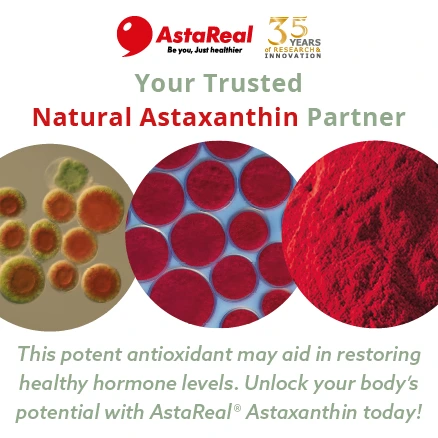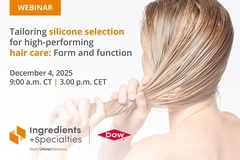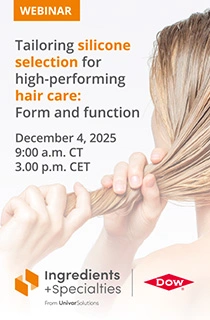“Extremely alarmed” scientists push for microplastic options amid rising eco-friendly innovations
Researchers at Aristotle University of Thessaloniki, Greece, are “extremely alarmed” about microplastics in personal care and cleaning products and call for regulatory action on contamination while presenting new alternatives to microplastics. In addition to being a major environmental contaminant, they say the particles may also pose a health risk to people.
Small plastic particles, known as microplastics, are less than 5 millimeters in size and are found in a wide range of consumer goods, including face scrubs and shampoos. Microplastics play a variety of functional roles in personal care and cosmetic products, such as stabilization and exfoliation. These particles are either intentionally added to products or result from the degradation of larger plastic items. Despite being efficient in products, they have a negative impact on the environment, according to the study in Cosmetics.
As the beauty industry moves away from microplastics, the focus shifts toward sustainable and biodegradable alternatives that can provide the functionality of traditional microplastics without the associated environmental risks.
The researchers believe development and adoption of biodegradable glitters and natural exfoliants are steps in the right direction.
Natural microbead innovations
Although microbeads from cosmetics constitute less than 3% of the total microplastic pollution, the scientists say their persistence in marine environments poses ecological risks as they often escape from wastewater treatment plants.
For natural and sustainable alternatives to microbeads, they suggest algae-derived phytomolecules as viable alternative sources.
Alginates are a type of salt derived from alginic acid from the cell walls of marine algae. “When combined with divalent cations, alginates have the ability to create a gel-like structure that offers structural integrity and a form similar to that of the microbeads,” details the paper.
Another option is a new seaweed polysaccharide-based encapsulated curcumin-loaded microbeads in exfoliating bio-cosmetic products.
Other more well-known ones include coffee, apricots, walnuts, kiwi seeds and soluble cellulose beads.
 The researchers believe development and adoption of biodegradable glitters and natural exfoliants are steps in the right direction.Biodegradable biopolymers as alternatives
The researchers believe development and adoption of biodegradable glitters and natural exfoliants are steps in the right direction.Biodegradable biopolymers as alternatives
Interest in biopolymers, which are made from renewable resources and may have advantages over conventional plastics in terms of biodegradability and lower environmental impact, has grown as a result of the search for sustainable substitutes, say researchers.
The paper presents biopolymers as an emerging alternative to synthetic microbeads.
For instance, chitosan-based beads are noted for their superior cleansing capabilities compared to traditional polyethylene microbeads, which are “fully degraded by microorganisms, enzymes and seawater.”
Other examples point to chitin-derived beads, which are said to effectively release bioactive compounds, making them suitable for cosmetic applications next to biodegradable polylactic acid microbeads developed via an eco-friendly melt-electrospraying method, which showed lower adsorption of persistent organic pollutants, high skin hydration and low irritation.
Additionally, microbeads made from a class of bacterial polyesters called polyhydroxyalkanoates (PHAs), including PHBHV and PHBHHx, have potential use in cosmetics as they are biocompatible and rapidly biodegraded in marine environments without harming plant growth, according to research.
Despite rising alternatives to microplastics, scientists say that it is important that they do not introduce new environmental drawbacks. This can be ensured by using a life-cycle assessment of the alternatives.
 Microplastics from cosmetics contribute to marine pollution, affecting aquatic ecosystems and human health.Environmental and health toxicity
Microplastics from cosmetics contribute to marine pollution, affecting aquatic ecosystems and human health.Environmental and health toxicity
According to the study, cosmetics microplastics are a major source of pollution in aquatic environments due to their widespread presence.
The particles release harmful chemicals and harm marine life for centuries by entering water systems through sewage and runoff. Once in the environment, they are challenging to remove and can accumulate in marine organisms, potentially entering the human food chain.
Researchers warn that microplastics’ strong adsorption ability enables them to draw in and transport dangerous POPs. These pollutants can accumulate in the tissues of marine organisms, posing health risks up the food chain, including to humans.
They cite evidence showing that microplastics can cause physical damage to organisms and potentially lead to toxic effects.
The study also warns of particles smaller than 100 nanometers, known as nanoplastics that present risks in addition to microplastics.
Microplastics can degrade into nanoplastics, which are tiny enough to get through cell membranes and harm living creatures with cytotoxic effects, say study authors. However, they note a gap in research regarding their full impact on human health and the environment due to limitations in methodologies.
Regulations encourage innovation
The researchers see that legislative proposals to restrict or outlaw the use of microplastics in cosmetics have been made in response to mounting concerns.
For instance, the EU implemented a ban on microplastics in rinse-off cosmetics and glitter last year, aiming to reduce their environmental impact. In 2019, the ECHA proposed further restrictions, projecting a reduction in microplastics release by approximately 400,000 tons over the next two decades.
Major companies, including L’Oréal, Colgate-Palmolive, Unilever, Johnson & Johnson, Beiersdorf and Procter & Gamble, pledged in 2013 to remove microbeads from their products.














